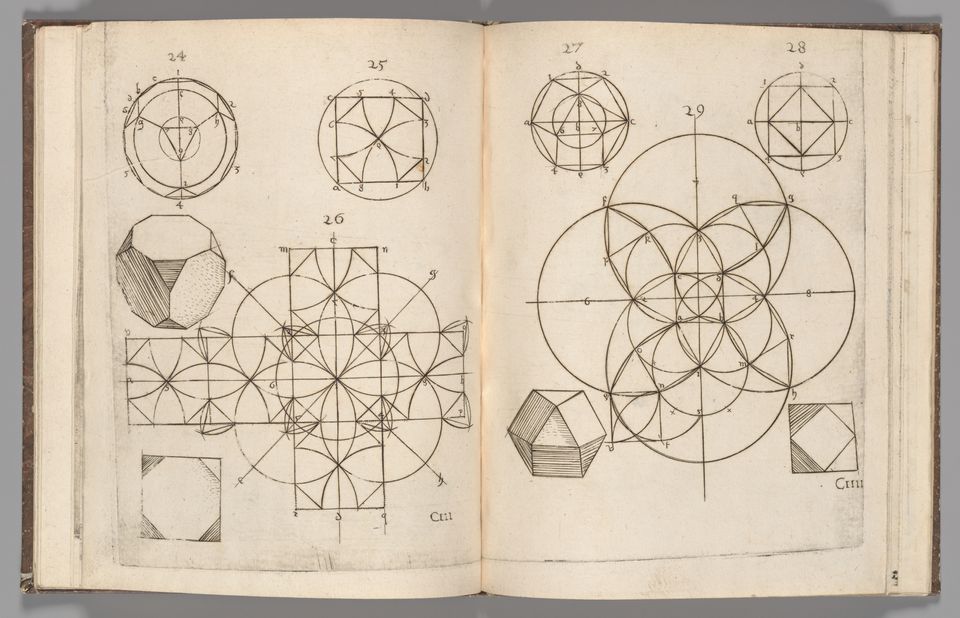Little Math Problems

by Nicholas Russell.
The Notes app is, for me, a graveyard from which any number of half-baked ideas or errant interests might be resurrected depending on how bored I am. I’ve been trying to reacquaint myself with boredom as of late. Really, I’ve been re-reacquainting myself with it on and off for years now.
Usually, this entails finding some sort of non-phone activity that isn’t reading to occupy my time. Sometimes, it’s crossword puzzles, sketching, going on walks, staring at a wall. Other times, I try to find something new. For whatever reason, just after high school, I got really into doing little math problems.
Anyone familiar with the YouTube channel Numberphile will be familiar with some of the following. I was never a particularly gifted math student. It was one of those subjects I wanted to be good at and like but just never cracked all the way. Luckily, with patience, certain areas of math are easy to understand, even appreciate, which is how this Notes app list came to be.
Below is merely an excerpt of some of the little equations, concepts, and games I’ve collected over the years. Now, in airports, on trains, in waiting rooms, the impish desire to pull out my phone to scroll Twitter fights with my desire to not do that. This list doesn’t cure my screen addiction, but, more often than not, it helps!
Equations
With light explanations.
Narcissistic numbers: 3435
"3435 is the only finite number in base 10, which is the sum of its digits raised to the power of itself."
3435 = 3^3 (or 3 x 3 x 3) + 4^4 (or 4 x 4 x 4 x 4) + 3^3 + 5^5
Kaprekar's Constant: 6174.
- Take any four-digit number with non-repeating whole numbers up to 9. For example, 8945, a random number I just came up with.
- Rearrange that number in two ways:
- First, from highest value digit to lowest. So 8945 becomes 9854.
- Second, from lowest value to highest. So 8945 become 4589
- Subtract the two numbers.
- Repeat step 2 with your new number. So, 9854 - 4589 = 5265.
- Rearrange 5265 to 6552
- Rearrange 5265 to 2556.
- Subtract the two and so on
- This process will eventually lead you to the number 6174, aka Kaprekar’s constant. It also works if you start off with 6174. Following these rules, you’ll always end back at 6174!
Stern-Brocot numbers
Okay, this one is a little tricky.
Perhaps it’s easier if we start by explaining the Fibonacci sequence. Fibonacci follows a pattern that generates a list of numbers by adding the two numbers that came before to get the next number.
So, starting the list at 0 and proceeding to the next numerical value, 1, we list both those numbers out like so: 0, 1. To get the third number, we add 0 + 1 to get another 1. So the list then becomes: 0, 1, 1. Adding the previous two numbers (in this case, 1 and another 1), we get 2. So the list becomes: 0, 1, 1, 2. And on and on: 0, 1, 1, 2, 3, 5, 8, 13, 21, 34, 55, …
Stern-Brocot is similar, but the generative sequence is different and you start at 1 instead of 0. We still add the first two numbers together. So 1 on its own plus nothing equals 1. So the list becomes: 1, 1. We add both 1’s together to create 2. So the list becomes: 1, 1, 2. But, and this is where things get tricky, we add to the list the second digit we used to come up with the third number. So, 1 + 1 = 2. That second 1 gets listed after the 2 again. So the list becomes: 1, 1, 2, 1. Next, we add 1 + 2 = 3, but because the 2 is the second number, we list it after our result. So the list becomes: 1, 1, 2, 1, 3. You continue on doing this until you get bored or mad at me.
Interestingly enough, if you’re mildly intrigued by math nerd stuff without necessarily grasping the theory, like me, if you take each pair of numbers and turn them into a fraction, eventually the entire Stern-Brocot list will give you every possible fraction, without any repeating values. So, yeah.
Melancoil: 145
For this one you should just watch the video.
@numberphile My Melancoil math-art!#Mathemagical!
— Jerry Vishnevsky (@mailsprower1) October 28, 2013
P. S. @standupmaths is awesome. pic.twitter.com/d2fbwe7raE
Grid Game
This one I play all the time, thanks to a guy on Youtube who goes by Chycho. Best with graph paper but not necessary:
- Make a 10x10 grid.
- Starting with 1 and going in consecutive order up to 100, try to fill in each box of the grid with a number. You can start 1 anywhere in the grid, but there are two crucial movement rules:
- If you want to place your next number, in this case 2, horizontally or vertically from where you placed 1, you have to skip two boxes.
- If you want to place the next number, again in this case 2, diagonally from 1, you have to skip 1 box. Obviously, you can’t go outside the bounds of the 10x10 grid and you can’t put a number in a box that already has a number in it.
- The goal is to fill the grid up to 100, but with the above constraints, it’s actually very difficult to do so.
Here, with this nice little grid notebook that has exactly 10x10 on every page, I have one of my highest-scoring games (97). I started off with 1 at the bottom left and kept moving vertically, skipping two spaces each time because of this, until I reached the top. Then I moved horizontally, again skipping two spaces. Eventually, you’ll run out of options to continue this way and you’ll have to move diagonally, skipping one space to do so.



Comments ()